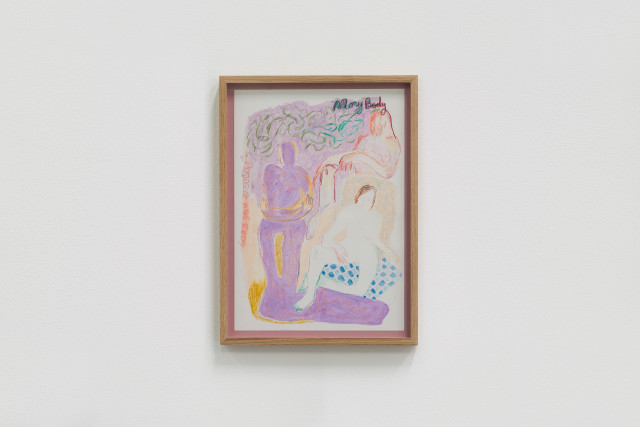Combining large-scale clay reliefs and drawings, Monika Grabuschnigg’s first solo exhibition, What satisfaction could you possibly have, explores the dislocated intimacies and disembodied desires of humans living in highly digitized societies.
How we search for and connect with others, how we long for, flirt and fantasize together is changing dramatically. The apps and websites we turn to seem to offer direct portals to other lives – immediate & intimate interactions that can lead to in-the-flesh satisfactions. But there is no unmediated exchange: we are subject to, and encouraged to enact, self-censorship, self-exploitation. Our loves and loneliness mined for profit. Each of us put to work as blister-thumbed miner.
Both the reliefs and drawings in the show reference the ever-present screens through which this happens. We see fractured and repaired bodies morphing into one another; cropped and cracked identities exaggerated and engorged by algorithmic bias; character-limited emotions congealing into searching limbs, messy embraces and visceral gazes.
Materially vulnerable, tonally fleshy, the inch-thick, flat-to-the-wall reliefs feel like substantial moments captured through a haze of distortion: the analog and digital worlds clashing head-on. The forms in the drawings are more of-this-worldly, but more deeply mired in dream-states. Created after (rather than as sketches for) the reliefs they feel like moments of surveillance: evidence gathered from tapping the data flows between the babbling ceramic.
The works are also intensely human – or human-ish. An ish that makes them all the more engaging. There is no easy, singular narrative on offer. Instead we are confronted with an insistent, information-rich polyphony: a polyamory of meaning. We see you, these works say, because you see us. We know you, because you know us. We surround you, because we are you.
Grabuschnigg describes her studio practice as a “near manic state, a kind of intense dancing in which I test & exploit my materials’ limits, try to trick them into doing something new”. Which is what we all can do with the tools and technologies that surround us, that know us, that are us. Recognize ourselves in them. Uncover the tricks we’re subject to. Then trick back, just as hard. Harder.
-Martin Jackson
April, 2018

